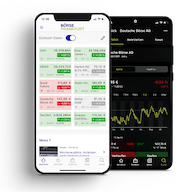Glossary
HCPI
The HCPI is used for measuring inflation in an international, mainly inner-European comparison. It is calculated according to uniform concepts, methodologies and processes, reflecting the price development in the various countries; it is based on the respective national consumption habits. The German HCPI is calculated by the Federal Statistical Office. The first steps to create a harmonised index were already taken in the late 1980s. However, there was no binding rule, so that these efforts proved little successful. This only changed when the Maastricht Agreement took effect and enabled a broader harmonisation.
The HCPI surveys the consumption spending of private households. Thus, it differs from the concept of national accounting for it only takes into account the private spending that actually occurred. However, there is no uniform weighting formula for the member states of the European Union. Furthermore, national particularities as regards consumption habits are not abstracted, either.
Based on the national HCPIs, the Statistical Office of the European Union (Eurostat) calculates the consumer price indices for the European Union, the Euro Zone and the European Economic Community.
The preliminary result is published around the 25th of the reporting month; the final results are published around the 15th of the following month.




